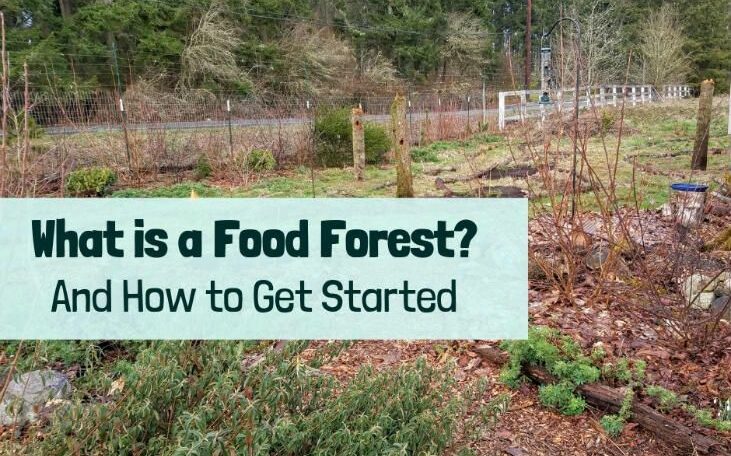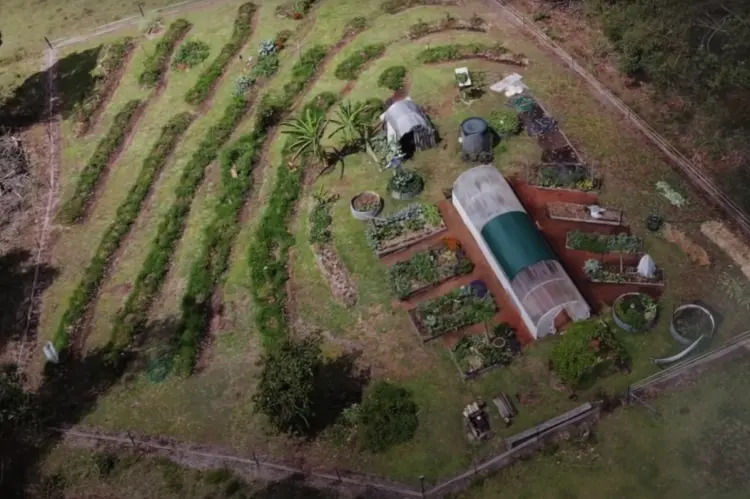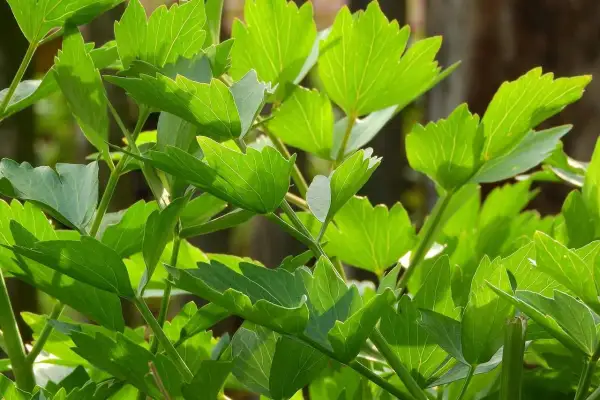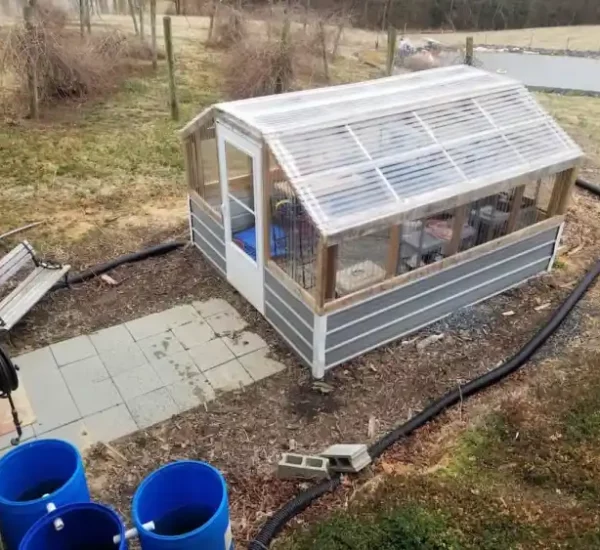Introduction to Food Forests
Food forests, also known as forest gardens or edible landscapes, are sustainable gardening systems modeled after natural ecosystems. These diverse and self-sustaining landscapes consist of layers of plants, including trees, shrubs, vines, and ground covers, that mimic the structure and functions of a forest. In this expert guide, we’ll delve into the principles, benefits, design elements, and maintenance practices of food forests, drawing insights from governmental organizations, horticultural bodies, and academic experts. 
Principles of Food Forests
Food forests are guided by several key principles:
Mimicking Natural Ecosystems
Food forests emulate the structure and functions of natural forests, with multiple layers of plants that interact and support each other.
Biodiversity
Biodiversity is a cornerstone of food forest design, with a wide variety of plant species selected to maximize ecological resilience and productivity.
Permaculture Principles
Food forests are often designed according to permaculture principles, emphasizing sustainable practices, minimal inputs, and regenerative agriculture.
Benefits of Food Forests
Abundant Harvests
Food forests can yield a diverse array of edible fruits, nuts, vegetables, and herbs, providing a sustainable source of fresh, organic produce.
Ecosystem Services
Food forests contribute to environmental conservation by enhancing soil health, promoting biodiversity, sequestering carbon, and conserving water.
Community Building
Food forests can serve as gathering spaces, educational resources, and hubs for community engagement, fostering connections between people and the natural world.
Design Elements of Food Forests
Canopy Layer
Tall trees, such as fruit and nut trees, form the upper canopy, providing shade, habitat, and food for wildlife.
Understory Layer
Shrubs, berry bushes, and smaller fruit trees make up the understory layer, filling in the space beneath the canopy and adding diversity to the ecosystem.
Herbaceous Layer
Perennial herbs, vegetables, and ground covers occupy the herbaceous layer, contributing to soil fertility, weed suppression, and food production.
Vertical Layer
Vines, climbers, and trellised plants utilize vertical space, covering walls, arbors, and other structures while adding aesthetic and functional value.
Maintenance Practices for Food Forests
Mulching
Apply mulch to suppress weeds, retain soil moisture, and add organic matter to the soil.
Pruning and Thinning
Regular pruning and thinning help manage plant growth, improve airflow and sunlight penetration, and prevent overcrowding.
Companion Planting
Select companion plants that support each other’s growth, deter pests, and attract beneficial insects.
Watering and Irrigation
Use water-efficient irrigation methods, such as drip irrigation or rainwater harvesting, to minimize water consumption and promote efficient water use.
Expert Recommendations and Resources
For more information on designing and maintaining food forests, consult reputable sources such as:
United States Department of Agriculture (USDA)
The USDA offers resources and publications on agroforestry, permaculture, and sustainable agriculture practices.
Permaculture Research Institute (PRI)
PRI provides educational materials, courses, and design resources on permaculture and food forest gardening.
Local Cooperative Extension Offices
Contact your local cooperative extension office for region-specific advice, workshops, and resources on food forest design and management.
Conclusion
Food forests offer a holistic approach to gardening and sustainable food production, integrating ecological principles with practical design elements. By mimicking natural ecosystems and harnessing the power of biodiversity, food forests can provide abundant yields of nutritious food while promoting environmental conservation and community resilience.
What exactly is a food forest?
A food forest is a gardening system modeled after natural ecosystems, consisting of diverse layers of edible plants such as trees, shrubs, vines, and ground covers. It aims to mimic the structure and functions of a forest while providing a sustainable and abundant source of food.
How does a food forest differ from a traditional garden?
Unlike traditional gardens, which often consist of rows of single crops, food forests are designed to mimic the multi-layered structure of natural forests. They prioritize biodiversity, soil health, and sustainability, resulting in a self-sustaining ecosystem.
What are the main components of a food forest?
The main components of a food forest include the canopy layer (tall trees), understory layer (shrubs and smaller trees), herbaceous layer (perennials and ground covers), vine layer (climbing plants), and root layer (root crops and fungi).
What types of plants are typically found in a food forest?
Food forests feature a wide variety of edible plants, including fruit and nut trees (e.g., apple, pear, walnut), berry bushes (e.g., raspberry, blueberry), perennial vegetables (e.g., asparagus, rhubarb), herbs, and annual vegetables.
What are the benefits of establishing a food forest?
The benefits of a food forest include increased food security, biodiversity conservation, improved soil health, reduced water usage, enhanced resilience to climate change, and the creation of vibrant community spaces.
Can anyone create a food forest, or is it only suitable for certain climates or environments?
Food forests can be created in a wide range of climates and environments, although specific plant selections and design considerations may vary depending on factors such as climate, soil type, and available space.
How much space is needed to create a food forest?
The space required for a food forest can vary depending on factors such as the desired size and layout, the number of plants, and the available land. Food forests can be established on small urban lots, suburban yards, or larger rural properties.
Are food forests low-maintenance, or do they require regular upkeep?
While food forests are often designed to be low-maintenance once established, they do require regular upkeep such as watering, mulching, pruning, and occasional pest management. However, compared to traditional gardens, the maintenance requirements are generally lower due to the self-sustaining nature of the ecosystem.
Can a food forest be integrated into an existing landscape or garden?
Yes, a food forest can be integrated into an existing landscape or garden, although careful planning and design may be necessary to ensure compatibility with existing features and plants.
Are there any resources or guides available for those interested in creating their own food forest?
Yes, there are numerous resources and guides available for those interested in creating their own food forest, including books, online articles, workshops, and permaculture design courses. Additionally, local horticultural societies, extension offices, and permaculture organizations may offer support and guidance for aspiring food forest gardeners.
- Best THC Sodas to Buy in Arkansas - May 28, 2025
- Exploring THC-Infused Sodas in Arkansas - May 28, 2025
- THC Beverages Now Trending in Alabama - May 28, 2025




